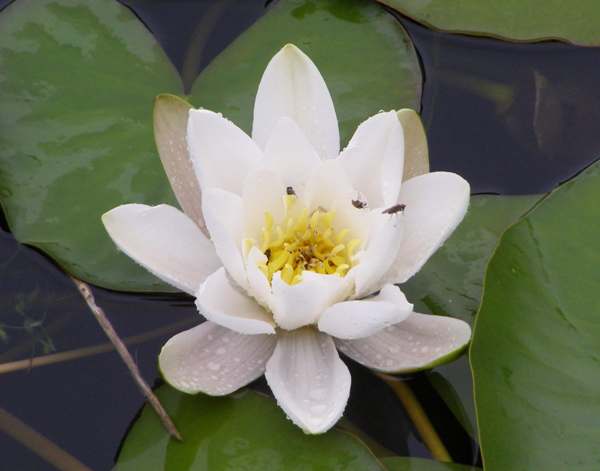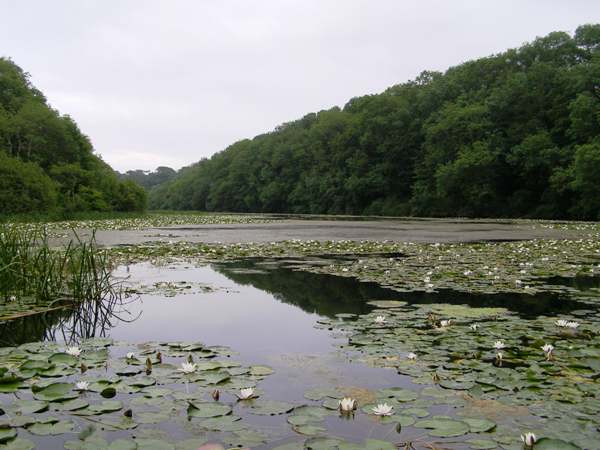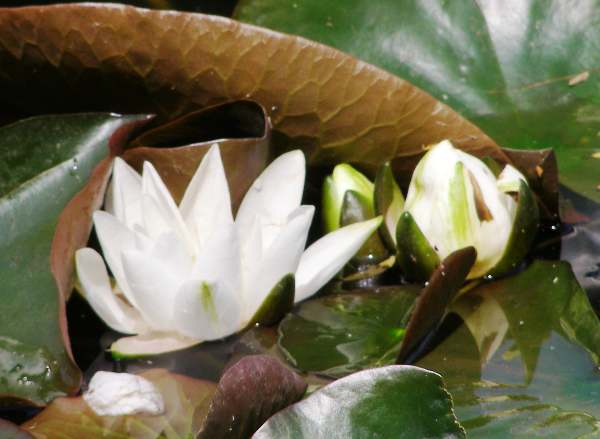Trees Birds Mammals Fish Amphibians Reptiles
Wild Algarve
Bookshop
Nymphaea alba - White Water-lily
Phylum: Magnoliophyta - Class: Liliopsida - Order: Nuphaeales - Family: Nuphaeaceae

White Water-lilies, with their large cup-shaped flowers and floating saucer-like leaves, are among the best-known of aquatic wildflowers.
Description
The dark-green round or heart-shaped floating leaves are up 10 tp30cm across, while the bowl-shaped flowers, with typically 20 petals and four sepals, are pure white and have deep yellow anthers and a pistill comprising many fused carpels. A rare red-flowered variety originated in Sweden and has since been cultivated and released into the wild in some places including parts of Britain.
Habitat
Nymphaea alba grows in still or very slow flowing freshwater 0.3 to 1.5m deep; it is most often seen in the margins of large ponds, lakes and canals.
Distribution
Nymphaea alba, which is fairly common in Britain and Ireland, is native to Europe, parts of North Africa and the Middle East.

Blooming times
White Water-lilies are normally to be seen in full bloom in summer and early autumn.

Similar species
There are, in fact, several other commonly seen water lilies in ponds, lakes, canals and slow-flowing streams. Some of these are escapees from garden ponds; others, like the Yellow Water-lily (Nuphar lutea) are native to Britain.
Sue Parker's latest ebook is a revised and enlarged edition of Wild Orchids in The Burren. Full details here...
Buy it for just £5.95 on Amazon...
Sue Parker's new ebook is a comprehensive and fully revised edition of her acclaimed field guide to the Wild Orchids of Wales. Full details here...
Buy it for just £5.95 on Amazon...
Please Help Us: If you have found this information interesting and useful, please consider helping to keep First Nature online by making a small donation towards the web hosting and internet costs.
Any donations over and above the essential running costs will help support the conservation work of Plantlife, the Rivers Trust and charitable botanic gardens - as do author royalties and publisher proceeds from books by Pat and Sue.